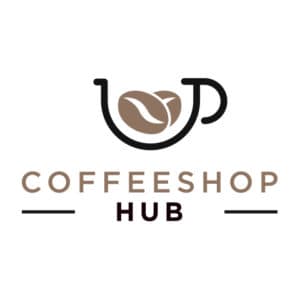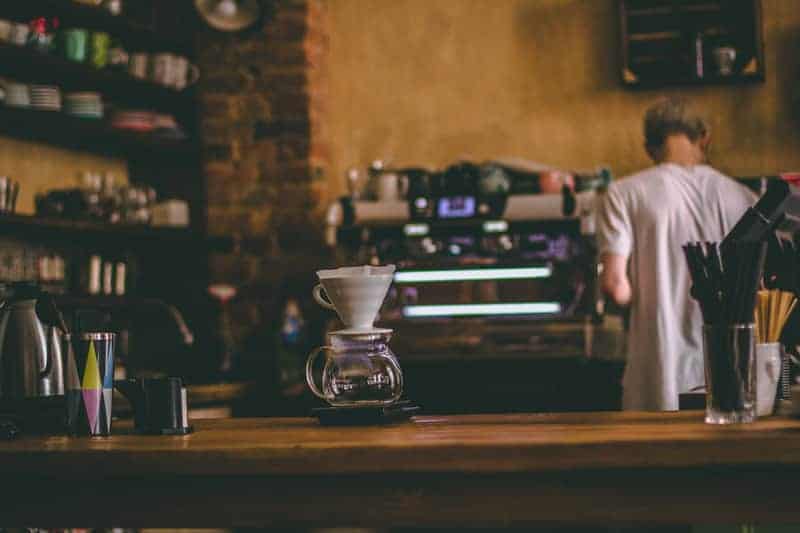
When designing the coffee bar for our coffee shop we had to learn the hard way. It was difficult and had little guide. We made some things right, and some wrong. And we’d like to share that to hopefully help others along the way.
When designing your coffee shop bar, first know your customers, then the concept for your coffee shop, and your food menu. Afterward define your equipment and the flow of personnel and customers. With these in mind design the space layout, and finally, incorporate visual elements for aesthetics.
So this is the process we, as coffee shop owners, feel is the right one to designing your coffee shop bar. It is not just about aesthetics and equipment, it has a whole lot to do with your concept and customers, as well as with functionality. The more thought you give to this at the early stages of your coffee shop start up, the better equipped you will be for the future.
The following infographic details this process. To dive deeper into all this elements please read long this post.

Consumers and coffee shop concept
This is most definitely the first step of the designing of your coffee shop overall, not just the coffee bar.
Ask yourself questions like the following:
- Who are you aiming to provide service and value for?
- Who are the people that frequent your coffee shop location?
- What is the traffic flow during the weekdays, does it change during the weekends?
- Are you expecting to have families or coworkers, or both?
With this in mind,
- What type of value do you expect your coffee shop to bring?
- Is quality one of your main attributes, or are you aiming to serve as fast as possible, being rapidness a priority before quality?
- Or is it both?
- Or, on the other hand, are you aiming to provide a quite, relaxed ambiance for people to spend as much time as they want.
The following examples can ilustrate a coffee shop concept:
Books and coffee: A coffee shop with this type of concept can be imagined having all sorts of books for reading, maybe even a book club. Also, it can be imagined as a place to be able to seat and read for long hours, therefore probably have comfortable seating places. It will also probably do not have very loud music.
A french style coffee shop: This could be imagined as a “higher end” coffee shop, with fine pastries, and elegant furniture. You would also expect french type food
A coffee shop for families with kids: This type of coffee shop could have small tables for kids, as well as playgrounds so that parents could sit down and chat while their kids played.
Food and Beverage Menu
Now that you’ve identified your target audience and the value you wish to provide, it is time to determine the food and beverage menu you wish to provide. Do you aim to give coffee drinks, but also food to accompany the coffee? Regarding food, is it just pastries, or also for example sandwiches or salads? Or something even more elaborated?
The food and drinks you serve will determine the equipment you need.
For first starting out, we tried to have a lean operation, focusing on easy to make food. I believe this was a good strategy, especially at the beginning, when there is so much to learn and dominate.
Having a lean operation will allow you to understand the work involved, customer and personnel flow, and needs, without too much operational complexity. After a normal learning curve, and understanding of your operation, then you will be able to add more if needed.
So I would suggest starting lean, but, if your concept and target audience demands more, and plan to add more further along the way, then try to take this into account when designing your coffee bar.
For example, if you plan to have sandwiches ready to go, will you make them in front of your customers at the coffee bar, or will you have a space for a kitchen backdoor? Will you want to prepare basic food on your coffee bar, or will it be just for the exhibition? All this will be important when designing your coffee bar.
Equipment and utensils
Many coffee shops serve high-quality coffee. This means that you are sourcing your coffee beans from a reputable source, and probably considered specialty coffee. It does not have sugar added.
If this is the case for you, then you are probably also considering an espresso machine which in turn also determines other equipment.
The following is a list of basic equipment for your coffee bar, assuming you serve high-quality coffee drinks. You may not need all of this, but can serve as a basis to start sourcing.
- Espresso machine with at least 2 groups
- mill
- scale
- water boiler
- knock box
- tamper
- blender
- microwave
- small oven
- water supply
- ice maker
- small fridge
- refrigerated urne
- point of sale computer or tablet
- cashier
- dataphone
- telephone
Also, asuming you are serving desserts you will need?
- Utensils
- cups: 2 sizes at least
- plates for coffee and desserts
- silverware
- disposable cups
- bags
- box for storing tea
So the first thing will be to establish the equipment you will need for your coffee shop. Then you should ask for pricing and equipment specifications. Here it is important to understand the measures of the equipment in terms of height, width, and depth. This is critical to designing your coffee shop bar layout.
Electrical and other supplies
So after you have determined the equipment, you will now have a sense of the amount and type of electrical outlets you will need, as well as water or gas supply.
Is your spresso machine 220 voltage or 110 voltage? Do you need electrical supply as well for your cold display urn, dataphone, computer, blender, etc.?
Also, how about water? Your espresso machine will need to be connected to water, and also need an area to drain water.
Almost or all of your appliances will require electricity like your blender, oven, microwave, computer or tablet, etc.
So take this into account when designing your coffee bar. It is better to make arrangements at the beginning than having to go back when you have your coffee bar designed.
Flow of personnel and customers
This is critical for determining how your coffee bar will be arranged. Ask yourself questions like the following:
- When customers come inside your coffee shop, what is the first thing they see?
- Is the coffee bar visible from the outside or not? Is there a specific spot where you want your customers to focus?
- Which is usually the case in coffee shops especially if you have an espresso machine;
- or will the coffee bar integrated with the ambiance of the coffee shop in such a way that holds no special relevance?
- Also, is there a special emphasis you wish to draw your customer’s eye towards to? For example, do you have an exhibition of pastries?
- Do your customers go to the coffee bar to order, or do you attend them at the table?
- In terms of where to place the cashier, will you rather have it near the espresso machine or completely on another side?
- Do customers pay at the beginning or a the end of the coffee bar?
- Or will the pay at the table by the service of a waiter?
All these questions are important to ask yourself when designing your coffee bar. Generally, for a coffee shop, the coffee bar has high relevance.
For us, when we designed our coffee shop we made the mistake of having the cashier too near the espresso machine. This in turn made it difficult for the barista to maneuver inside the coffee bar with ease. Of course, the layout of the place we had was a difficult one to accommodate customers and coffee bar with ease because it was very small and narrow, however, going back we should have made the decision of putting the cashier away from the espresso machine so that the flow for customers and baristas was easier.
Another interesting thing that happened, was that we envisioned that customers would order at the coffee bar and then come back to retire their order. This did not happen much, and customers were expecting their food to be delivered to the table. We became flexible to these demands and started taking food to the table, which, in turn, made our employees having to go in and out of the coffee bar.
So try to do some exercises, similar to the ones that were made by founders of Macdonalds (video right ahead), to see if what you have in mind makes sense. Try to imagine what the flow would be for your coffee shop. Try to estimate various scenarios and possibilities, and make necessary adjustments.
Also, estimate the amount of space that will be necessary on the inside of your coffee bar so that the personnel can comfortably work. Can you work and at the same time have someone pass by you?
Space layout
So finally, when you have taken all this into consideration it is time to determine the space layout for your coffee bar.
Here ideally you will have an architect taking measures and designing your coffee bar. This person would take into consideration the space needed for movement on the back and front of the coffee bar. Also, the distance between equipment.
Depending on your food menu you will also need space to prepare food, or to attend customers. Also, you will need to establish the height of the coffee bar to be able to work comfortably. As well as the desired layout from the outside. Have an architect put all these aspects on a drawing and make necessary adjustments.
The following architectural drawing is the one we used for our coffee shop.
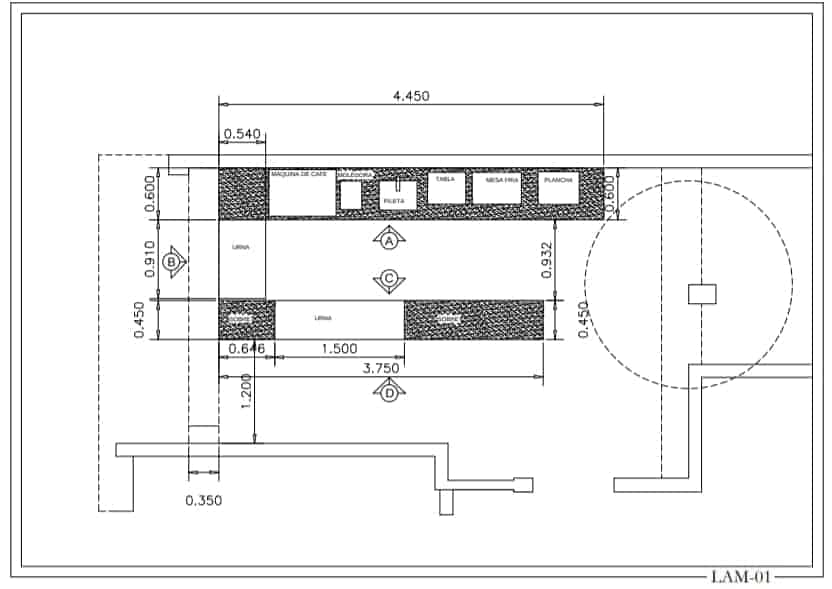
Visual elements for aesthetics and materiales
So now that you have all your requirements and space layout it is time to choose the materiales you want for your coffee bar.
At this point I would suggest, if you are not an expert, to ask advice from an interior designer or architect if you are able to do so. Nothing substitutes experience and good eye for designing. Deliver them your concept and ideas and ask for suggestions.
Also, take into consideration the following elements:
Materials
Try to think of materials that will endure time. Also, that can be in contact with water and easy to clean. On your coffee shop, and specially close to your spresso machine and blender, you will be spilling liquids. So you must have a material that won/t be easily damaged by moisture and that can be cleaned frequently.
Background
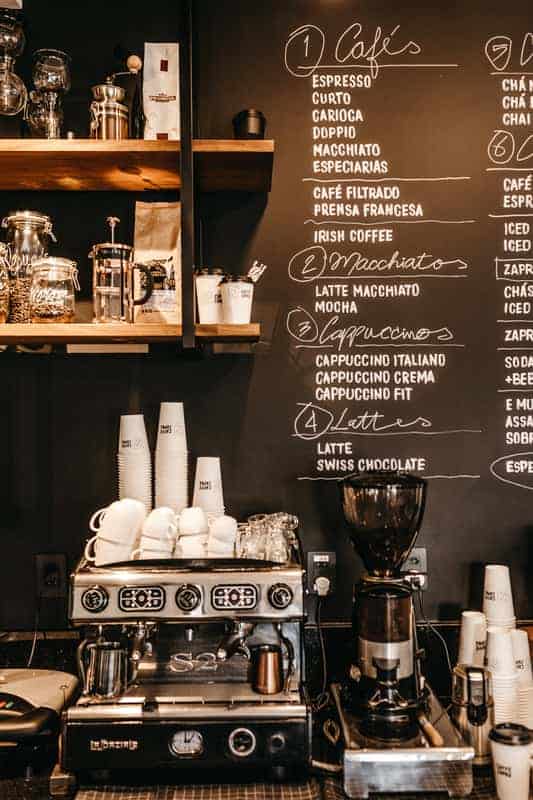
It is important for the customer eye to have something pleasant to look at behind your coffee bar. It is a great opportunity to show them your menu, to invite them to buy coffe bags or to show them coffee-related items like mugs. But also, you could decorate your coffee bar back wall with tiles, or wood.
Colors
I believe warm colors are better than cold ones for an inviting atmosphere for your coffee shop. Examples of warm colors are wood type colors. Examples of cold colors are blue.
A study made by Manquian Qian (2014) revealed the following colors to be the predominant for coffee shops in Seattle: green, white, gray, wooden, yellow, and coffee brown. These colors are for the entire coffee shop overall, nonetheless, it also gives a guide to your coffee shop bar. I have found that wood colors as well as tiles are constantly used on coffee bars.
Visit other coffee shops that you like and enjoy and look what colors they use for their bar. Based on the ones that appeal most to you suggest and discuss these with your interior designer or architect.
Lighting
The lighting is so important for your coffee shop not just for aesthetics and warmth but also for your employees to be able to see well when performing their job.
Some coffee shops use hanging bulbs that give a very interesting look to your coffee bar. However, they may not provide the best lightning for your employees. So try to keep both things in mind when choosing your lighting: aesthetics and functionality.
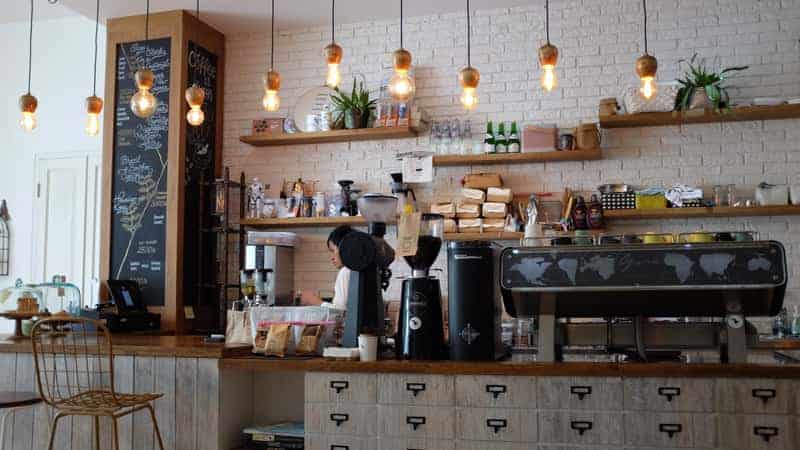
So I sincerely hope this article was useful for designing your coffee bar. I hope you learned that for a coffee bar there is much more than just the estetic behind the design, functionality is so much important to be taken into account beforehand. And both of these rely on the concept of your coffee shop and the customers you aim to provide service for.
References:
Manqian, Quan. 2014. Coffee shop, environmental, behavior, and design. How does social behavior and interaction influence coffee shop design? Thesis for the degree of Master of Fine Arti in Art and Design, with a concentration in Industrial Design. University of Illinois, Champaign. Can be found at: file:///home/chronos/u-f1196ad1e6a4462431cdb8beeb2f0920a43c7af2/MyFiles/Downloads/Manqian_Qian.pdf
